Producer Profile: Alex Newport (At The Drive-In, Death Cab For Cutie, City and Colour)
“I try my best to take each project on a completely individual level,” says Producer/Engineer Alex Newport.
It’s the only method that makes sense for a man who began his career playing uncategorizable sludge metal with Fudge Tunnel in 1989 and ended up earning a “Best Alternative Album” nod at the 2009 Grammys for his role on Death Cab For Cutie’s Narrow Stairs.
It’s been a long and varied two decades for this UK native who spent time writing songs with members of Sepultura before bringing order to the frenetic noise of The Locust and Polysics, producing genre-defining artists At The Drive-In and Death Cab For Cutie, and more recently, opening up to acoustic performers including O’Death and his latest collaborator City and Colour.
To Newport’s ear, the common thread through all these projects has simply been “passion, energy, and honesty.”
“Each of them are true individual musicians,” he says when asked about the ties between some of the most recognizable names on his discography. “None of those bands were trying to sound like anybody else.”
“You find a lot of bands that have a confidence issues and try to sound more like some obvious reference point. I try to encourage bands to do their own thing and figure out what’s unique to them.”
BAPTISM BY FIRE
Birthing the sound of sludge in Nottingham, UK
“It was a strange time,” says Newport of his days developing the sound of his own band, Fudge Tunnel, in Nottingham. “Later on we found out that we were a Grunge band. But we didn’t know it at the time,” he laughs. “There was no name for it in 1989. We were too heavy for Punk but too sloppy to be Metal.”
[pullquote]“I had no background with technology, but I had the background of music. At first [my method] was random, but it worked.”[/pullquote]
It wasn’t long before he found himself thrust into the role of producer out of aesthetic necessity.
“At that time in the UK there weren’t very many guitar bands. It just wasn’t a popular thing. The people running the studios didn’t seem to have any idea how to capture a rock band sound at all, and we would find ourselves getting into these fantastic arguments with engineers.
“I remember one session in particular where everyone was very unhappy, and I sort of ended up taking over the desk… It was interesting because I didn’t really know what I was doing. I just started twisting knobs left and right. After 30 minutes it just started to sound better to everybody.
“The reference points at the studio were all these Manchester bands, kind of guitar pop. We all loved a lot of that stuff too, but it just wasn’t what we were trying to do. We really loved Led Zeppelin and Punk Rock, and we were going for a much bigger sound. Not a lot of people know how to do that, even now.
“I had no background with technology, but I had the background of music. At first [my method] was random, but it worked.”
Newport started “hanging around” these studios and found that friends and bands around town were asking him to get involved in their projects. “At first I wasn’t charging people money because I was kind of making it up as I went along. But I ended up working with a few good producers and learned a bit from them a bit too.”
For a short time Newport wrote songs and played with members of Sepultura, Dead Kennedys and Biohazard in the band Nailbomb, and toured with the acclaimed noise rock trio Theory or Ruin before ultimately making the choice between producing and performing.
WHERE DO YOU EVEN START?
Or, “I feel sorry for the guy who has to record them.”
One of the themes that often pops up, especially on Newport’s early discography, is his mastery with music that tends toward relentless energy and dense arrangements.
His productions with bands like O’Death and Polysics have skillfully captured those artists’ tightly-wound and immediate dynamic without dilution. Much further down that road lies the jarring sound of The Locust.
Even this band’s most ardent fans have been known to describe their distinctive style as “An undecipherable wall of sound”. But in Newport’s hands, their chaos takes on unexpected clarity, if not order.
“They were friends of the Mars Volta guys. The first time I saw them they were playing a show all dressed in black trashbags. I thought it was awesome, but also such an onslaught. It was Jackson Pollock with guitars and synths. I remember thinking ‘This band is insane! I feel sorry for the guy who has to record them, because – where would you even start?!’ I just knew it would be a real challenge to make any sense of it. Three weeks later their manager called me and that guy was me!
“It was a challenge, but a challenge that I enjoy. With other bands, sometimes I’ll pull up a sound and warp it, make it more distorted and they’ll say ‘No, that’s a little too much’. I can tell you that’s never happened with The Locust. It’s quite freeing.
“But in the end, it’s really the same process as working with a Death Cab or a City and Colour: You’re selectively arranging frequencies and shaping instruments to fit in the space allotted, which is just two speakers. The only real difference is that with The Locust I don’t have to worry too much about song structure.”
RECORDING AT THE DRIVE-IN
Anything I could do to make you feel like you were standing in front of that stage.
On the other hand, At The Drive-In is a band that knows song structure. As their career wore on, these musicians developed an ear for ever-more ornate song forms that bordered on post-hardcore baroque. They’re a band that does a lot with few instruments, always delivering a startling impact. We asked Newport about his role on one of the albums that helped solidify their legacy.
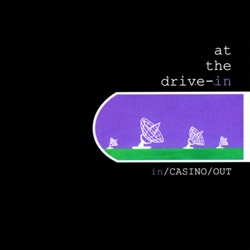
With Newport producing and mixing, At The Drive-In recorded "In/Casino/Out" (1998) as a live studio album.
“I’ll get as involved in the arrangement process as I think is necessary. That could be anything from working on the arrangement and structure and instruments or even helping with the lyrics, if that’s necessary.
“In their particular case, I thought they sounded so good that I didn’t want to interfere too much; especially at that point in their career.
“For [In/Casino/Out] these were songs they had been playing on the road for two years, and they were ready. That album was more about the energy and innocence of it. I was very aware of not trying to overproduce it.”
His effort shows: At the Drive-In’s sophomore LP is well-realized, but never over-polished. Big, raw, roomy snares, tightly controlled cymbals, high-tuned toms, edgy guitars, and dynamic, gut-wrenching vocals are delivered with a degree of taste and balance that never detracts from their inherent muscle. First, we asked Newport about the raw and striking drum sound:
“A lot of it is how Tony [Hajjar] plays. He’s such an incredible drummer. I really wanted the band to sound like a band. I don’t know if you’ve ever seen them perform live, but anyone who ever did was completely blown away.
“Some bands you want to get away from the live sound, and create something more refined, but in this particular case, I felt like everything about the band pointed to this incredible live energy. So I was trying to do anything I could to make you feel like you were standing in front of that stage. There were a lot of room mics. Too much separation wouldn’t have worked in their case.
A similar approach was taken with the rest of the band. Newport tells of guitar players facing cranked amps to milk out every last bit of sustain and feedback from their speakers, and an animated singer blazing through final takes back-to-back.
Throughout the history of rock records it’s rare to find tight performances delivered with the degree of live intensity and unself-conscious abandon heard on these records. We were curious to find out how Newport helped facilitate those kinds of moments.
“The vocals were recorded through a handheld SM58. I wanted to remove everything that suggested a studio. The only reason we didn’t record [vocalist Cedric Bixler-Zavala] live with the band was because we didn’t have another room to put him in.
“We did the songs in chunks of four or five because that’s how many would fit on a reel of tape. When it came time to do vocals I’d roll tape and have Cedric sing through the whole reel without stopping. So, a lot like a live show, he’d sing through four songs live in one go. We’d have him do that maybe twice, to give us the option to comp, and there was probably a punch or two, but if I remember, a lot of what we used was first take, live.”
DEATH CAB FOR CUTIE
From Screamo Slamming to Mixing for Grammys
“Energy doesn’t necessarily come from loud guitars or screaming,” says Newport, whose more recent work features albums both from jittery bands like the synth-heavy Polysics and Does It Offend You, Yeah as well as more elegant, open and sophisticated releases from Death Cab For Cutie and City and Colour.
“It’s not really intentional on my part,” says Newport. “I’ve always listened to a huge variety of music. With Fudge Tunnel we took as much from REM and XTC as we did from Godflesh and Black Flag. My taste changes a little bit as I get older, and music styles change all the time. I find myself sometimes deliberately moving away from the more aggressive stuff, and sometimes not. Different projects always come along I’ve enjoyed the variety.”
But what kind of chain of events leads a producer from post-hardcore screamers to indie rock crooners?
“I had mixed an album for a band called So Many Dynamos that was produced by Chris Walla, the guitarist and mixer for Death Cab. For whatever reason Chris didn’t mix that particular album, but he heard my mixes on it and said he loved them. So when [Death Cab] were working on [their own album] Narrow Stairs, they had mixed pretty much the whole thing but were having trouble with one track, and called me.
“My relationship with Chris came together because of So Many Dynamos. I’m sure So Many Dynamos called me because of At The Drive in, and I know those guys reached out to me because of Knapsack. So there’s always this interesting lineage that takes you to new territories.”
MIXING STYLE
Dynamic Duplicates at Future Shock
“I really like parallel compression on a lot of things. I’ll do a lot of mults [a patchbay point that allows an analog signal to be duplicated across multiple channels –Ed.]
I might mult out the kick drums 2 or 3 times. Same goes with the vocal, snare and bass. On that Death Cab mix [for the song “Long Division”] I had 2 or 3 kicks, and I’d slip between those channels on different parts of the song. I’m trying to create a dynamic change in tone throughout the song.
Newport explains that his parallel approach is less about finding a blend between two sounds, and more about creating a distinct tone for each section:
“The obvious example is the vocal where someone’s singing in the verse – you set your EQ, compression and effects, and everything sounds great. Then, the chorus hits and they start belting on the chorus and all of a sudden you’ve got a nasty 2k[Hz] buildup. You could find an EQ setting somewhere in between that’s a kind of compromise, but that’s not really acceptable. So, the better choice is to mult it to two channels and develop a sound for each section.
“At some point I figured, there’s no reason you couldn’t do that with a kick drum or an effects return. Those moves help create these subtle dynamics that really make the song come alive.”
Most of Newport’s mixes are completed in Future Shock, his own personal room on the East Williamsburg/Bushwick border. Although he’s been based in the States for years, transplanting from California to New York in recent years, many of Newport’s sessions keep him traveling.
“Many of my clients are out of the country,” he says. “I have ton in Canada and several in Japan and a lot of British bands I work with. If I’m producing it often makes sense to go wherever the band is, but typically, if I’m asked to mix, I’ll do it at my studio. Having my own space is helpful because I’m able to manipulate budgets and make them work, and since I know where everything is it tends to go more quickly.”
Future Shock is built around an Amek Einstien console that at first glance appears to be an “in-line” console with individual on monitor and send on each channel. Closer examination reveals that this is actually a unique design that crams 80 individual automated channels into a modest 7’ frame. Channels 1-40 line the bottom of his board, with faders for channels 41-80 stacked directly above them.
Although he’s never used all 80 on a mix, Newport says this incredible flexibility allows him to warp individual sounds in parallel without thinking about the board’s limits. He mixes these individual tracks down to 1/2″ tape through a single SSL G384 stereo bus compressor.
Aside from his penchant for avoiding the excesses of digital recording, Newport doesn’t have too many necessities when it comes to gear. “I don’t really need physical or tangible touchstones,” he says. “Just musicians with real honesty and passion.”
“My main goal is to make the bands sound like bands. I don’t really use plug-ins or Auto-Tune and I’m a little wary of doing too much writing in the studio. Better, I think, to do some pre-production with the band in advance so the session becomes more about capturing than constructing. With all of our advances in technology, a lot of peoples’ favorite records still seem to be the ones created with the methods from the 60s and 70s because they sound honest and dynamic.
“I really prefer working on tape, and when I do use the computer, I still mix on the analog desk with automation and analog hardware. Automation in the computer feels fiddly and unmusical to me when compared with working on real faders.”
CITY AND COLOUR
In homage under stained glass
Singer/Songwriter Dallas Green was reluctant to perform under his own name, and so took the moniker City and Colour. We’ll let you make the connection.
“I first heard Dallas a few years ago and was just really blown away. He exhibits some of the same things I heard in Death Cab and At The Drive In. He’s just a real, individual musician. His voice, especially, is just unique and fantastic. He hadn’t done a lot of work with a producer yet, so I was really excited to see what I could bring out of him.”
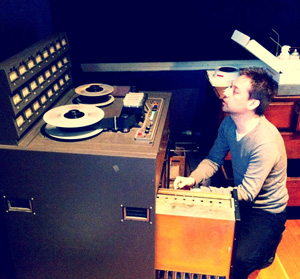
Newport at the MCI JH 2" 24-track tape machine during City and Colour sessions, Catherine North Studio. Photo by Haris Cehajic.
“The mic that I preferred most often on the acoustic was the Beyerdynamic M160. It’s not too expensive, so it’s within reach for many people, but it’s absolutely fantastic on almost anything. And the main vocal was the Shure SM7- another mic that’s not terrifically expensive. It’s very directional and will take EQ really well.
“On a few of the more rock-sounding things we did use an [AKG] C12. But on many songs the rhythm of the guitar and the rhythm of the vocal are symbiotic and I felt they really had to be done in one take. When I’m recording acoustic guitar and vocal together, it becomes important to choose mics that sound good and are very directional. The SM7 is great for that. With a large-diaphragm condenser that’s not as possible – you get more bleed, and then phase becomes more of an issue.
“We also did quite a few songs where he wasn’t using headphones. We would play the tracks through the monitors and he would stand signing a few feet behind me. It was a pretty incredible experience for me. Dallas is one of the most incredible singers in the universe, and to have him singing that close to me was quite breathtaking.”
At first, Newport was wary of recording in Catherine North studio of Hamilton, Ontario. It’s an open-plan design where the control room and live room are one in the same. He’d avoided these kinds of studios in the past, relishing the sonic distance and perspective that working with a separate control room afforded him.
“Then Dallas told me that his friend Dan [Achen] who had produced the last City and Color record had owned the studio, and he wanted to pay homage to Dan in whatever way he could. As soon as I heard how much of a special place this was for Dallas, I didn’t care about the lack of control room or anything. If it was a place he felt good about and had a vibe, that was good enough for me.
“And it is a really cool studio. It’s built in a former church, so it has these 40-foot high ceilings and stained glass windows. The open plan makes things a little bit trickier, especially when it comes to recording drums, but the vibe of this space more than made up for any of that. In the end, the album was recorded and mixed entirely to tape. We didn’t turn on the computer once. [On this album] I just wanted the sound to be as real as his songs are.”
FADE OUT
A “European city” in the States
With clients in Japan, Europe, and Canada, Newport finds himself traveling more often than not, and rarely tracking near his Brooklyn home. So, with a whole world to settle in, much of it more affordable than his current digs, why choose New York City?
“I always wanted to live in New York,” says Newport. “It’s more like a European city with a city center you can walk to. I’d always been thinking of it. I eventually ended up with a New York-based manager, and when my lease came up in California, I said ‘maybe I’ll try New York after all’.
“On a personal level, it’s more my kind of vibe, and I just find it more inspiring. There are so many artists in close proximity; Photographers, painters, musicians, writers. That exists in California too, but it’s so spread out that you’re not quite in the middle of it, meeting people in quite the same way.
“In New York, you just can’t help but be involved.”
Justin Colletti is a Brooklyn-based producer/engineer who works with uncommon artists, and a journalist who writes about music and how we make it. Visit him at http://www.justincolletti.com.
Please note: When you buy products through links on this page, we may earn an affiliate commission.







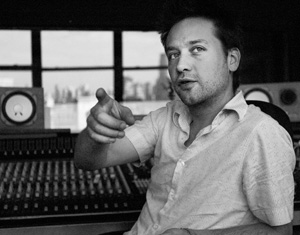
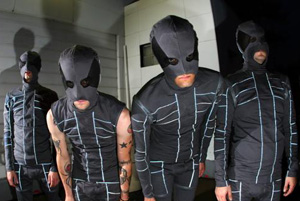
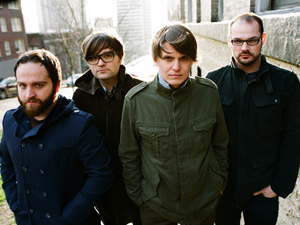
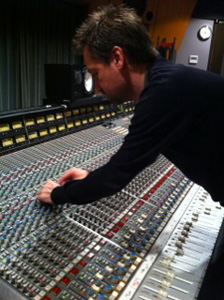
Echoes de Luxe
May 20, 2011 at 8:10 pm (14 years ago)Alex did a phenomenal job mixing our debut EP!